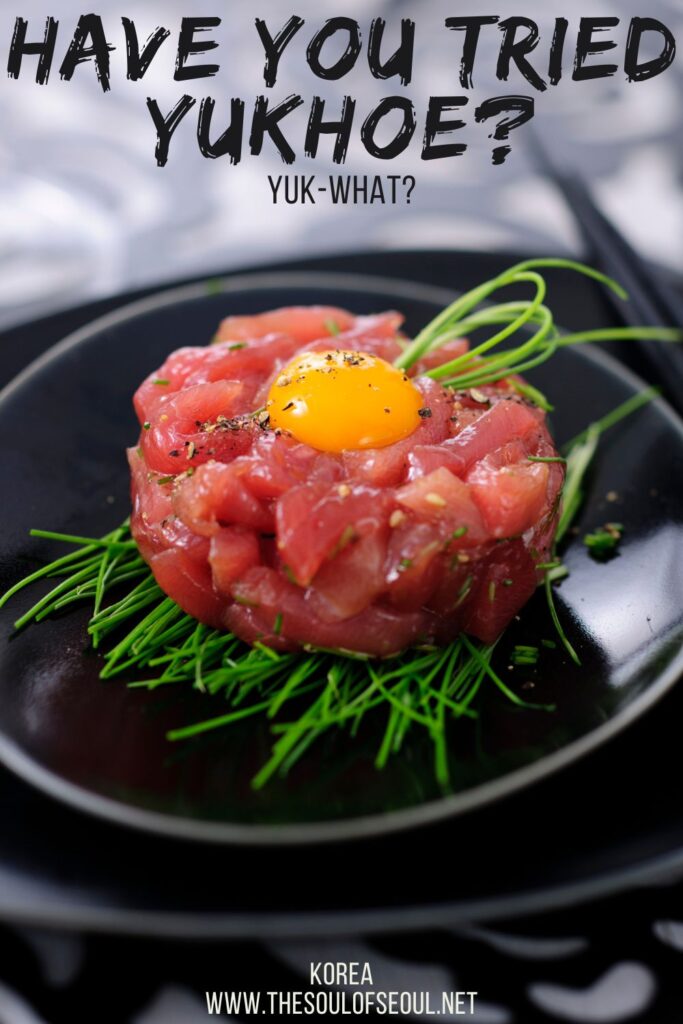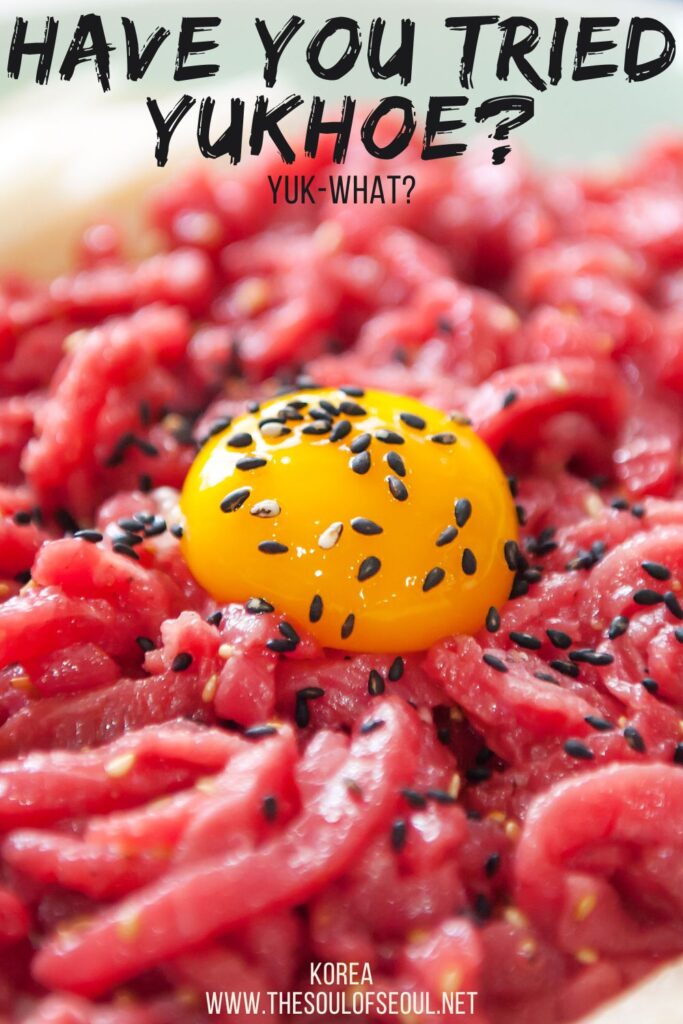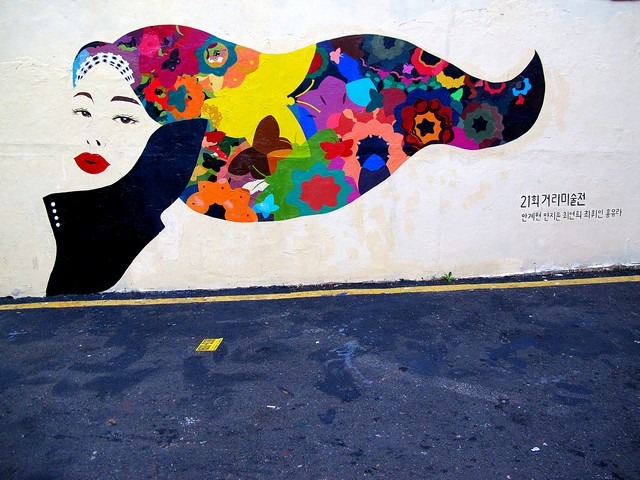Have you tried Yuk-hoe? Yuk-What?
The first time I saw yuk-hoe (육회), or Korean steak tartare, on the table I thought they were going to stir fry it on the grill. Of course, I’d be forgiven as you often have yukhoe in bbq restaurants where there is a big grill right in the middle of the table. Alas, for this dish, it’s best enjoyed straight up raw. Was I intent on eating a raw egg and raw beef the first time I saw it? I was not, but I’m glad I did because yukhoe is not one of my favorite Korean delicacies. It’s delicious, full of umami, and a must eat if you’re visiting Korea.
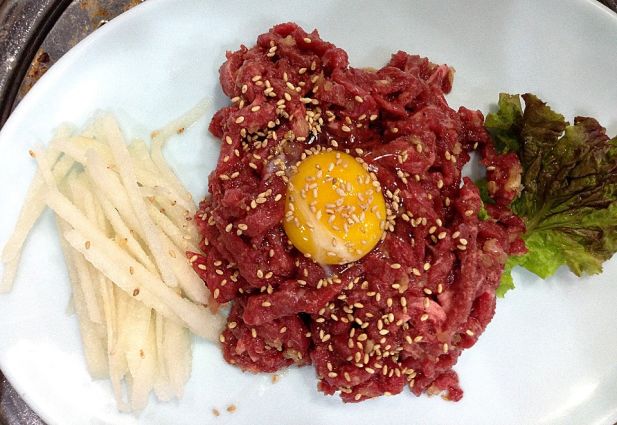
(This post contains affiliate links, which means I receive a certain percentage of a sale if you purchase after clicking. These funds go to maintain the site. Thank you for your support.)
What is yukhoe?
Yuk-hoe is the Korean version of steak tartare. Yuk means meat and hoe means sashimi. A tender cut of beef is thinly sliced and often mixed with a marinate of soy sauce, garlic, sugar, sesame oil, salt and pepper. It’s served on a platter with the raw egg on top and some thinly sliced Korean pear. Once on the table one person will mix this all together into a rather sloppy mess, it looks much more pleasant before it’s mixed together, and then diners dig in.
If you’ve had steak tartare in other countries, don’t think it’s the same. I’ve eaten it abroad and without the marinade and pear, it’s so different. Korean steak tartare is a delightful sweet and savory dish that you’ll want every time you see it on the menu.
Is yukhoe safe to eat?
Koreans are very particular about their beef, which is quite obvious on the menu of any proud beef establishment. The country of origin for the beef will be listed next to the platter, these days it’s mostly Korean, Australian, and American cuts that can be seen. Yuk-hoe has to be served fresh and as such, the origin and quality are extremely important. The Korean government implemented a Beef Traceability System in 2004 that requires that all beef be tagged with an ID number that includes information on the age, the origin, the supplier, the distributor, the grade, the butchering date and the butcher shop it was cut in.
Most good beef restaurants will have signs that proclaim when the new beef has come, or will come, “소 들어오는 날”, which is helpful as yuk-hoe should only be eaten within a day of defrosting and shouldn’t be aged more than a day after slaughtering. It’s worth a try when visiting.
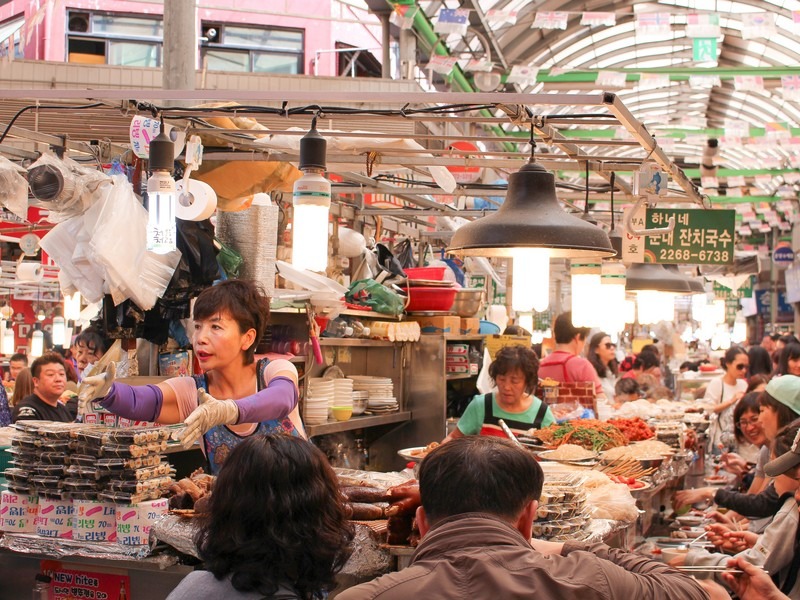
Where to eat yukhoe in Seoul
Gwangjang Traditional Market in downtown Seoul is my favorite for numerous Korean delicacies and delicious eats, but it’s also one of the BEST places to try Korean yukhoe in the city. There’s a little hidden alley of yukhoe stops and you can’t go wrong here. Don’t get me wrong though, you can find yukhoe all over. I’ve eaten yukhoe at all kinds of places and have had fantastic dishes wherever we are. Just make sure they’ve got fresh beef wherever you intend to go.
Buchon Yukhoe (부촌육회)
You can have the standard normal yukhoe here, but they also have a dish of yukhoe and sannakji, or diced octopus which is full of umami.
- Address: 200-12 Jongno, Jongno-gu, Seoul (서울 종로구 종로 200-12)
- Hours: Every day: 10:00am ~ 10:00pm
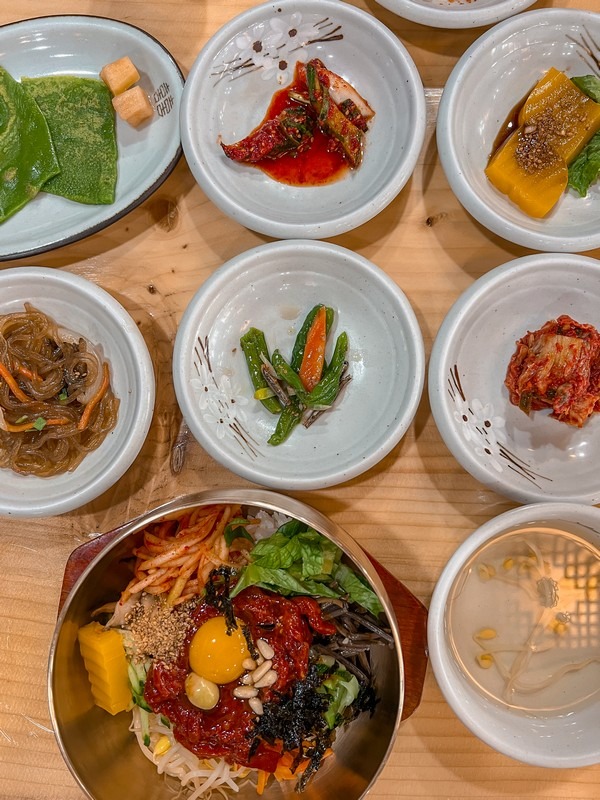

History of yukhoe in Korea
Korea is a bit unique in the region as in neighboring countries Japan and China, it’s not common to eat raw beef. So, where did it come from? It seems yukhoe has been a dish in Korea since the Three Kingdoms and was an influence of the Mongolians. It wasn’t really popularized that far back though.
People didn’t have access to cow as not ever could butcher a cow. Butchering of cattle was forbidden except for the royal family during the Joseon Dynasty so you’d only see yukhoe at royal banquets during that time. In the early 20th century however, the beef industry wasn’t as controlled by the government anymore and official beef markets popped up where people had access to fresh fresh cuts of beef. This is one reason you’ll find delicacies like yukhoe bibimbap in Jeonju.
Did you like this post? Pin IT!
